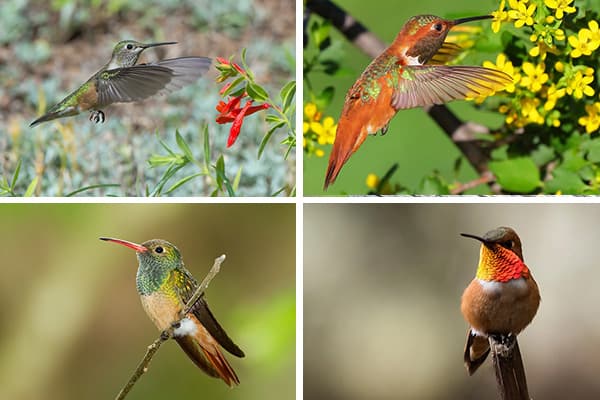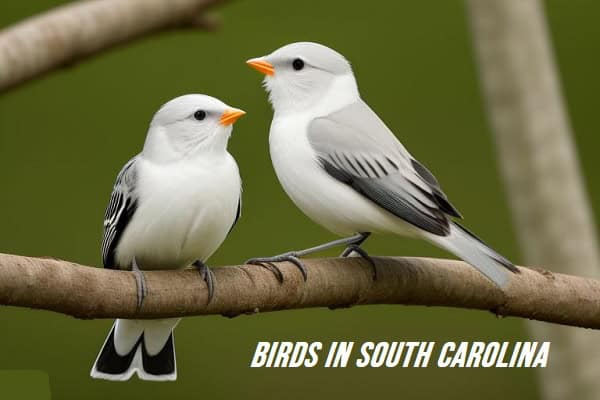7 Types of Owls in Alabama (With Pictures)
Hey there, nature fans! Ever wonder about the cool animals in Alabama? Well, get ready to be blown away! Alabama has seven kinds of owls! Yep, you heard it right! In this article, we’ll show you all about these awesome birds with some cool pictures. If you love birds or are just getting into them, this guide will help you learn about the owls in Alabama. So, get set to be amazed by these incredible creatures.
1. Eastern Screech-Owl
The Eastern Screech-Owl is a small but stunning owl species found throughout Alabama. These fascinating creatures have unique characteristics that set them apart from other owl species in the region.

Appearance and Adaptations
With its compact size and striking plumage, the Eastern Screech-Owl captivates bird enthusiasts and nature lovers alike. They have short and stocky bodies, measuring about 9-10 inches in length, and distinctive ear tufts that add to their charm.
One interesting adaptation of the Eastern Screech-Owl is its camouflaged feathers, which come in two color morphs: gray and rufous. The gray morph blends seamlessly with tree bark, while the rufous morph matches the reddish-brown tones of their preferred habitat.
Habitat and Range
The Eastern Screech-Owl is a versatile species that can be found in a variety of habitats throughout Alabama. They prefer dense woodlands, including deciduous forests, coniferous forests, and mixed forests. The species also adapts well to human-altered landscapes such as suburban areas and parks.
These agile hunters are primarily nocturnal, using their excellent eyesight and acute hearing to locate prey. They perch on tree branches, silently waiting for small mammals, birds, and insects to come within striking distance.
Distinctive Call
“Whinny-whinny-whinny!”
The Eastern Screech-Owl is renowned for its unique call, which consists of a series of whinny-like trills. Males and females have slightly different variations of this call, using it to communicate their presence and defend their territories. If you spend a quiet evening in an eastern woodland, you may be lucky enough to hear this enchanting sound.
Spotting Eastern Screech-Owls in Alabama
If you’re eager to spot an Eastern Screech-Owl in Alabama, here are a few tips:
- Visit appropriate habitats: Look for them in wooded areas with mature trees, especially those near open fields or bodies of water.
- Go owling at night: Eastern Screech-Owls are most active at dawn and dusk, so plan your outings accordingly.
- Listen for their calls: Take the time to familiarize yourself with their distinctive whinny call, as this can be a helpful indicator of their presence.
- Be patient and observant: Owls are masters of camouflage, so keep your eyes peeled for any signs of movement or unusual shapes.
Remember to maintain a respectful distance from these amazing creatures and observe them from afar. Enjoy the experience of encountering one of Alabama’s remarkable owl species in its natural habitat.
| Eastern Screech-Owl | Eastern Screech-Owl Facts |
|---|---|
| Scientific Name | Megascops asio |
| Size | 9-10 inches in length |
| Color Morphs | Gray and Rufous |
| Habitat | Dense woodlands, deciduous forests, coniferous forests, mixed forests |
| Main Prey | Small mammals, birds, insects |
| Call | Distinctive whinny call |
2. Great Horned Owl
The Great Horned Owl, one of the largest and most powerful owl species in Alabama, is a sight to behold. With its imposing size and distinctive features, this majestic bird is a true symbol of the Alabama wilderness.
Measuring up to two feet in height and boasting a wingspan of up to five feet, the Great Horned Owl commands the skies with its powerful presence. Its iconic “ear tufts” or “horns”, which are actually feather tufts, add to its striking appearance, making it easily recognizable.

When it comes to hunting techniques, the Great Horned Owl is a master of stealth and precision. Equipped with razor-sharp talons and exceptional night vision, this owl species excels in capturing its prey, which can range from small mammals like rabbits and squirrels to other birds.
The preferred habitats of the Great Horned Owl include dense forests, wooded areas, and open fields. They are adaptable birds and can be found throughout Alabama, from urban parks to remote wilderness.
Hunting Techniques of the Great Horned Owl
The Great Horned Owl employs a variety of hunting techniques to secure its next meal. Its primary hunting strategy is perch hunting, where it patiently waits on a high perch, scanning the surroundings for any signs of movement. Once it spots its prey, it swoops down with impressive speed and accuracy, seizing its target with its powerful talons.
Another hunting technique employed by the Great Horned Owl is still hunting. This involves silently stalking its prey on the ground, using its exceptional camouflage and stealth to get within striking distance without being detected. Once close enough, it launches a surprise attack, overpowering its victim with its strength and agility.
Encountering a Great Horned Owl in the Alabama wilderness is an unforgettable experience. Their distinctive hooting call resonates through the night, adding an air of mystery and enchantment to their presence. Keep an eye out for their large nests made in tree cavities or even on the ground, as they raise their young owlets.
If you want to witness the awe-inspiring beauty of the Great Horned Owl firsthand, head to the forests and open spaces of Alabama. Plan your visit during dusk or dawn, when these nocturnal hunters are most active. Remember to tread lightly and respect the natural habitat of these magnificent creatures.
Characteristics of the Great Horned Owl
| Feature | Description |
|---|---|
| Size | Up to two feet in height |
| Wingspan | Up to five feet |
| Distinctive Features | Ear tufts or “horns” |
| Hunting Techniques | Perch hunting, still hunting |
| Preferred Habitats | Dense forests, wooded areas, open fields |
Experience the wonder of encountering a Great Horned Owl in the wild, and marvel at its grandeur and hunting prowess. As you explore the Alabama wilderness, keep your eyes and ears open for this magnificent bird of prey.
3. American Barn Owl
The American Barn Owl is a magnificent bird that embodies grace and elegance. With its distinctive heart-shaped face and striking white plumage, this owl species truly captivates the imagination. Found throughout Alabama, they are an integral part of the state’s diverse owl population.
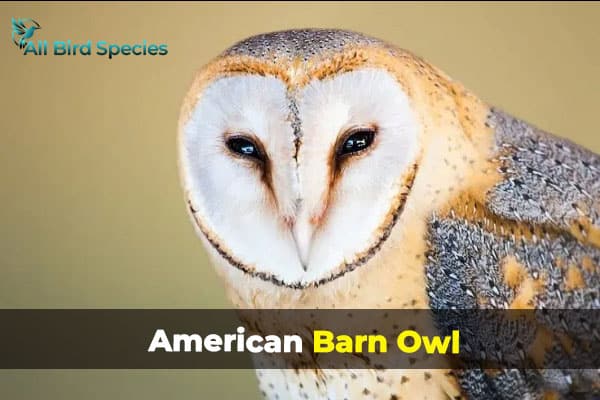
Distinct Appearance
The American Barn Owl stands out with its unique physical features. Its beautiful white feathers, tinged with buff and gray, allow it to blend seamlessly into its surroundings. The heart-shaped facial disc acts as a specialized sound collector, aiding in their exceptional hearing abilities. Their long legs and wings enable them to navigate silently through the night sky.
Nesting Habits
American Barn Owls are cavity nesters, making homes in abandoned barns, silos, and other structures. They have also adapted to nesting in sturdy old trees, cliffs, or even man-made nest boxes. The female owl lays a clutch of eggs, with an average of 4-7 eggs per brood, and both parents participate in incubating and raising the young.
Hunting Behaviors
This owl species is primarily nocturnal, using their keen senses to hunt small mammals such as mice, voles, and shrews. American Barn Owls employ a silent flight technique, meaning their wings are specially designed to reduce noise. They rely heavily on their exceptional hearing, aided by a facial disc, to locate prey in complete darkness.
Observing American Barn Owls in Alabama
Alabama offers numerous opportunities to observe the American Barn Owl in its natural habitat. Areas with open grasslands, agricultural fields, and wetlands are ideal for spotting these beautiful creatures. Coastal regions, including the Mobile-Tensaw Delta, are known for supporting a thriving population of American Barn Owls.
Remember, when encountering American Barn Owls or any other owl species, it’s crucial to maintain a respectful distance and observe from afar. These wonderful creatures deserve our admiration and protection, contributing to the rich tapestry of wildlife in Alabama.
4. Barred Owl
The Barred Owl, with its distinctive barred plumage and haunting call, is a fascinating owl species that can be found in Alabama. To fully appreciate this magnificent bird, let’s delve into its natural history, preferred habitats, and adaptations for nighttime hunting.
“The Barred Owl is known for its beautiful barred plumage, a pattern of alternating dark and light stripes on its feathers. This unique appearance helps it blend seamlessly into the forests and woodlands where it resides in Alabama.”
Barred Owls are primarily found in mature forests with dense tree canopies, but they are adaptable and can also be seen in suburban areas. These owls have a preference for living near bodies of water, such as rivers, swamps, and marshes, where they can find an abundant supply of food.

The Barred Owl is a skilled hunter that primarily feeds on small mammals like mice, voles, rabbits, and squirrels. Its adaptations for nighttime hunting include silent flight, facilitated by fringed feathers that reduce noise, and exceptional low-light vision. These adaptations allow the Barred Owl to navigate through the darkness with ease and pinpoint its prey.
Prime Spots to Observe Barred Owls in Alabama
- Oak Mountain State Park: This expansive park offers a diverse range of habitats, from forests to lakes, making it an ideal location to spot Barred Owls.
- Little River Canyon National Preserve: This beautiful preserve is home to a variety of wildlife, including Barred Owls. Explore the park’s trails and keep your eyes and ears open for these captivating birds.
- Sipsey Wilderness: Located within Bankhead National Forest, the Sipsey Wilderness provides a pristine habitat for Barred Owls. Trek along the forest trails to increase your chances of encountering these elusive creatures.
| Habitat | Prey | Conservation Status |
|---|---|---|
| Mature forests with dense tree canopies | Small mammals like mice, voles, rabbits, and squirrels | Least Concern |
Barred Owls are enchanting creatures, perfectly adapted to their nocturnal lifestyle. So grab your binoculars and head to one of these prime spots in Alabama to witness the beauty of the Barred Owl firsthand.
Short-Eared Owl and Long-Eared Owl
The Short-Eared Owl and Long-Eared Owl are two elusive owl species that call Alabama home. These fascinating birds have distinct features, hunting strategies, and behaviors that set them apart from other owl species in the area.
5. Short-Eared Owl
The Short-Eared Owl, known for its unique facial disc and distinctively short ear tufts, is a captivating sight to behold. With a wingspan of up to 40 inches, these owls are skilled hunters, navigating open grasslands and marshes in search of prey. Their preferred meals include small mammals like voles, mice, and rats.
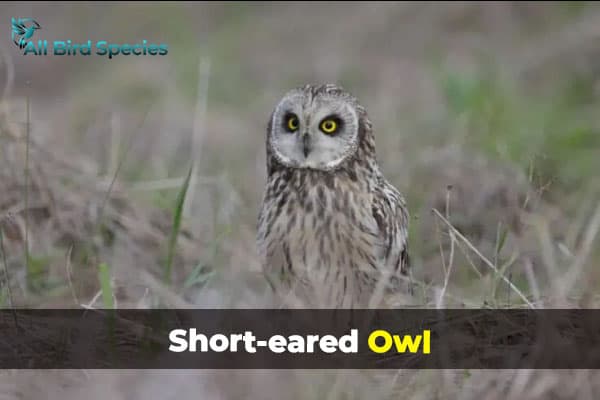
You can often find Short-Eared Owls hunting during the day, especially around dusk and dawn. They rely on their keen eyesight and excellent hearing to locate their prey. If you’re lucky, you may spot them gracefully gliding low over fields or perching on fence posts.
6. Long-Eared Owl
The Long-Eared Owl, as the name suggests, is known for its long ear tufts that resemble cat-like ears. These tufts are purely ornamental and serve no actual hearing function. With a wingspan of up to 39 inches, these owls are masters of silent flight, allowing them to approach their prey without being detected.
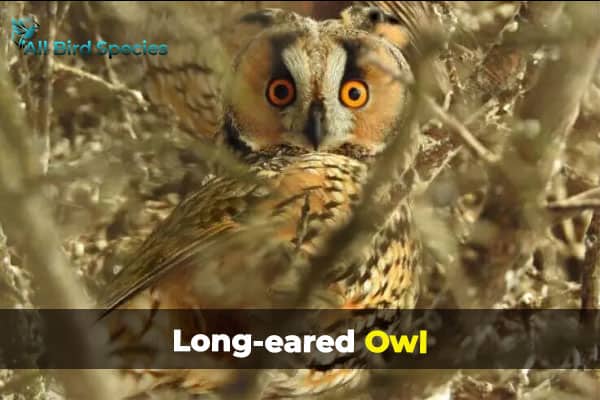
The Long-Eared Owl tends to inhabit woodlands, dense forests, and even urban areas with suitable cover. Its diet consists mainly of small mammals, such as mice, rats, and voles. You may hear their distinctive hooting call during the breeding season, particularly in the evening hours.
Where to Find These Captivating Owls in Alabama
If you’re hoping to catch a glimpse of the Short-Eared Owl or Long-Eared Owl in Alabama, there are a few locations where they are known to frequent. The Wheeler National Wildlife Refuge, Lake Guntersville State Park, and the Sipsey Wilderness area are all excellent spots to start your search.
Keep in mind that both species are most active during the breeding season, which typically occurs from late winter to early spring. Timing your visit accordingly will increase your chances of encountering these captivating owls.
Whether you’re a seasoned birder or simply have a curiosity for Alabama’s diverse bird species, observing the Short-Eared Owl and Long-Eared Owl in their natural habitats is an experience you won’t want to miss.
7. Northern Saw-Whet Owl
The Northern Saw-Whet Owl is a delightful owl species that can be found in Alabama. Despite its small size, this owl is known for its incredible cuteness and unique physical attributes. With its round head, large yellow eyes, and streaked plumage, it’s hard not to be enchanted by this charming bird.
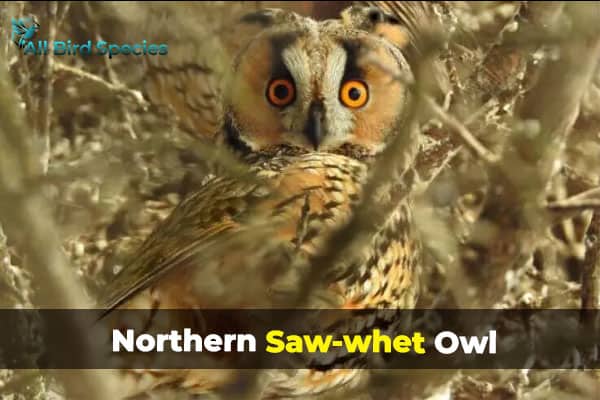
When it comes to nesting habits, the Northern Saw-Whet Owl prefers to make its home in tree cavities, often taking over abandoned woodpecker nests or using natural tree holes. In Alabama, you can find these adorable owls in coniferous or mixed forests, where their preferred hunting grounds are located.
If you’re eager to catch a glimpse of the Northern Saw-Whet Owl, there are a few places in Alabama where you’re more likely to spot them. The Oak Mountain State Park, the Sipsey Wilderness Area, and the Wheeler National Wildlife Refuge are all known hotspots for owl sightings. Remember to visit during the owls’ active period, which is usually at dawn or dusk, for the best chances of encountering this enchanting bird.
Check Our Previsou Article
| 7 Proven Ways to Attract Pileated Woodpeckers |
| Owls in Missouri |
| Common Types of Birds Found in Spain |
| Types Of Finches In Hawaii |
Frequently Asked Questions
Q1: What is the most common owl in Alabama?
The Eastern Screech Owl is the most common owl species in Alabama.
Q2: Are owls protected in Alabama?
Yes, owls are protected under state and federal laws in Alabama.
Q3: What is the smallest owl in Alabama?
The Elf Owl holds the title of the smallest owl species in Alabama.
Q4: Where do most owls live in the US?
Owls are commonly found throughout the United States, with various species inhabiting forests, grasslands, deserts, and urban areas.



